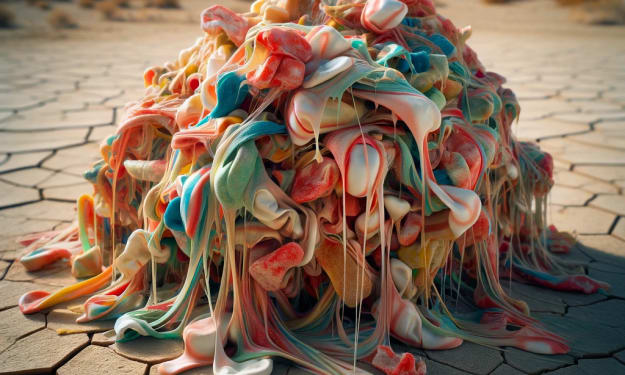What Fabric for DIY Screen Printing?
Best Fabric Choices for DIY Screen Printing

Screen printing is a popular technique for creating custom designs on various fabrics. When embarking on steps of screen printing project, selecting the right fabric is essential for achieving high-quality results. In this article, we will explore the best fabric options for screen printing, considering factors such as fabric type, compatibility with screen printing frames, hand printing suitability, and fabric limitations. We will also discuss the benefits of fabric screen printing kits and machines. By understanding the characteristics of different fabrics and their suitability for screen printing, you can ensure successful and durable prints for your DIY projects.
Best Fabric for Screen Printing Frames
The fabric used in screen printing frames should have a tight weave to hold the ink effectively and prevent bleeding. One of the most commonly used fabrics for screen printing frames is polyester mesh. It offers durability, resistance to stretching, and excellent ink flow. Polyester mesh comes in various mesh counts, allowing for different levels of detail in the print.
Fabric Options for Screen Printing
Screen printing can be done on a wide range of fabrics, including:
Cotton:
Cotton is a popular choice for screen printing due to its absorbency and smooth surface. It holds ink well and produces vibrant prints. However, it's important to pre-wash cotton fabrics to remove any sizing or finishes that may affect the ink's adhesion.
Blends:
Fabric blends, such as cotton-polyester blends, can also be suitable for screen printing. They offer a balance between the natural feel of cotton and the durability of polyester.
Linen:
Linen fabrics provide a textured surface that can add a unique aesthetic to screen prints. However, due to their looser weave, achieving fine details may be challenging.
Best Fabric for Hand Screen Printing on Fabric
For hand screen printing on fabric, consider using fabric types that allow for easy ink application and good color saturation. Some suitable options include:
Cotton Jersey:
Cotton jersey is a soft and stretchy fabric that works well for hand screen printing. It offers good ink penetration and produces vibrant prints.
Cotton Poplin:
Cotton poplin is a tightly woven fabric with a smooth finish. It provides excellent ink coverage and is suitable for detailed designs.
Fabric Types Not Ideal for Screen Printing
Certain fabrics may not yield optimal results when used for screen printing. These include:
Sheer or Lightweight Fabrics:
Fabrics with a sheer or lightweight nature, such as chiffon or organza, can be challenging to screen print on due to their delicate nature and lack of opacity. Achieving sharp and opaque prints may be difficult on these fabrics.
Knitted Fabrics:
Knitted fabrics, like jersey or rib knits, have a more textured surface and stretchiness, which can make achieving precise prints challenging. The ink may not adhere as well to the uneven surface.
Benefits of Fabric Screen Printing Kits and Machines
Fabric screen printing kits and machines offer several advantages for DIY enthusiasts:
Ease of Use:
Fabric screen printing kits often come with the necessary printing tools and materials, making it convenient for beginners to get started. Machines automate the printing process, allowing for consistent and efficient results.
Precision and Detail:
Using screen printing kits or machines ensures consistent registration, resulting in precise and detailed prints. This is particularly beneficial when working with complex designs or patterns.
Efficiency:
Fabric screen printing machines enable faster printing compared to hand printing. They allow for multiple prints in a shorter time, making them suitable for larger projects or production runs.
Is Silk Good for Screen Printing?
Silk is a fabric that can produce excellent screen prints due to its smooth surface and high absorbency. However, screen printing on silk requires careful handling as it is delicate and prone to stretching. It may be more suitable for experienced screen printers who are familiar with working on delicate fabrics.
FAQs
What material can I use to screen print?
You can use various materials for screen printing, but the most commonly used material is a polyester mesh screen.
What fabrics are not good for screen printing?
Sheer or lightweight fabrics, as well as knitted fabrics, are generally not ideal for screen printing due to their delicate nature or textured surface.
What is needed for DIY screen printing?
For DIY screen printing, you will need a screen (mesh), a frame, screen printing ink, a squeegee, stencil or design to transfer onto the screen, and a printing surface such as fabric or paper.
What fabric is used for screen printing frames?
Polyester mesh is typically used for screen printing frames due to its durability, resistance to stretching, and excellent ink flow.
What is a substitute for screen filler?
An alternative to screen filler is using a light-sensitive emulsion, which allows you to create more intricate designs on the screen.
Is screen printing the same as sublimation?
No, screen printing and sublimation are different printing methods. Screen printing involves pushing ink through a stencil on a screen onto the printing surface, while sublimation involves transferring ink from a solid to a gas state, which then bonds with the fabric or substrate.
Can you screen print without emulsion?
Yes, it is possible to screen print without using emulsion. Instead, you can use stencil films or vinyl to create the design on the screen.
How do you screen print on a shirt at home?
To screen print on a shirt at home, you will need to prepare a screen with your desired design, place the shirt on a flat surface, align the screen on top of the shirt, apply ink onto the screen, and use a squeegee to evenly distribute the ink across the design. Lift the screen carefully to reveal the printed design on the shirt, and allow the ink to dry before wearing or washing the shirt.
Conclusion
Selecting the right fabric for DIY screen printing is crucial for achieving successful and long-lasting prints. Fabrics such as polyester mesh, cotton, cotton blends, and linen are commonly used for screen printing. It's important to consider factors such as fabric type, compatibility with screen printing frames, hand printing suitability, and fabric limitations. Fabric screen printing kits and machines offer convenience, precision, and efficiency.
About the Creator
T Shirt Plus Australia
We can manage all your garment printing or promotional merchandise needs and give you more time to focus on your business. Just contact us now, and we will try to help you manage all your apparel printing.
Enjoyed the story? Support the Creator.
Subscribe for free to receive all their stories in your feed. You could also pledge your support or give them a one-off tip, letting them know you appreciate their work.






Comments
There are no comments for this story
Be the first to respond and start the conversation.